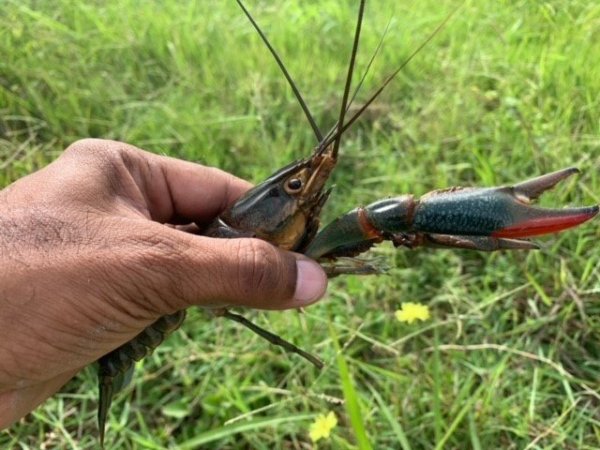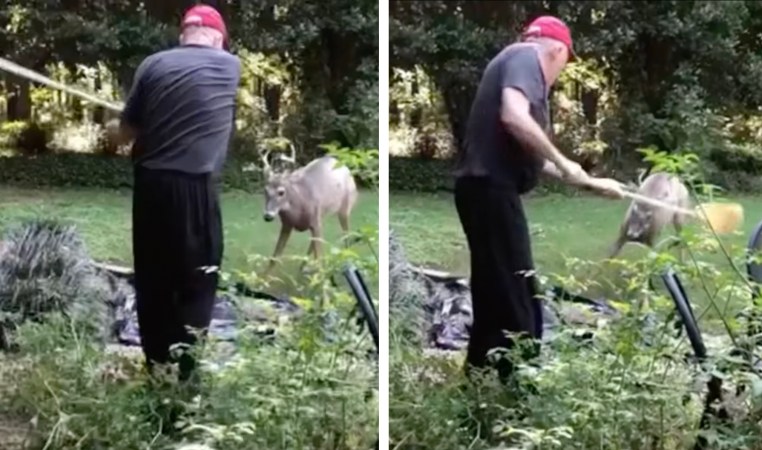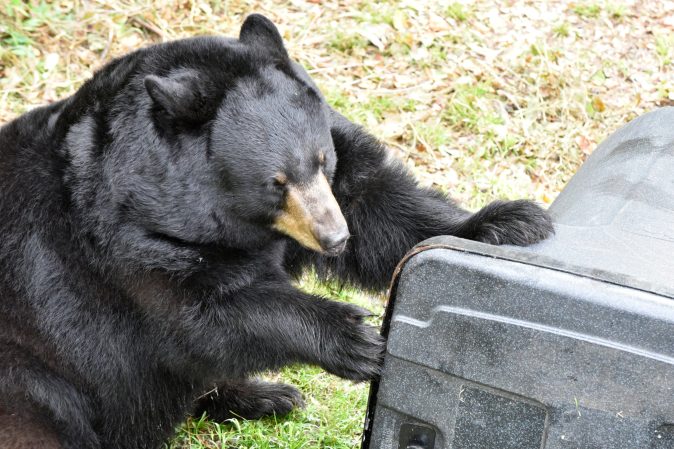The Internet can be a dark place, and it got a little darker on Friday, Jan. 27 when Esquire Middle East published an article titled “Trophy hunter eaten alive by brother of lion he shot for an Instagram post.” The headline alludes to controversy, bloodshed, revenge, and a debate over trophy hunting. But there’s one problem. Every element of the article is fake.
It appears the authors of Esquire Middle East, which is an offshoot of popular global lifestyle magazine Esquire with its own audience of over 580,000 readers, stitched the story together from three unrelated and inaccurate pieces of content. They used a photograph that has circulated the Internet for years without any attribution, an unsourced story from a sketchy website, and a fictional video produced for the Australian government as part of a two-year social experiment on the effectiveness of viral content. Here’s how one of the fakest hunting articles on the Internet came to be.
The Story
On Jan. 26 at 5 p.m., verified Twitter user Fight Haven tweeted an article from the River City Post.
The tweet caught fire quickly. By 3:30 p.m. the next day, it had 14.7 million views, 18,200 retweets, and 171,200 likes. It also had a bunch of replies, one of which would become crucial to the Esquire Middle East story. But we’ll get to that in a minute.
The River City Post is a WordPress website without any semblance of organization, masthead, or identification of who’s in charge. It’s just a constant stream of articles with titles like “Man Eliminates A 12 Year Old Kid For Throwing A Dead Snake On His Wife” and “Kim Kardashian Gets Lit Up Like A Christmas Tree In 1 Vs. 1 Squabble With Her Sister.” The posts don’t have bylines, they are simply attributed to admin.” The River City Post story was published on Jan. 20 and reads:
“A large cat [hunter’s] remains were found after he was eaten by the pride of lions that he was hunting in the fields of South Africa. The Lion Hunter is widely known across Instagram for his videos and pictures showing his successful hunts. The man was heard screaming from a distance by people outside near the South African city of Phalaborwa. But the lions quickly eliminated their prey and had already eaten most of his body before being chased off, leaving his head untouched. Police at first thought the man was a tractor driver who worked nearby until they seen he was still streaming on [Instagram] Live and identified the man.”
Without any sourcing, links to police reports, or further information on the Instagram account, the article-all 111 words of it-is completely unverifiable. The most real part of the post is where the author embedded an old video from CBS News detailing a similar story from February 2018, which could have been the inspiration for the article. Nowhere in the piece does it say the lion’s brother ate the hunter, which is arguably the most shocking part of the headline.
As of Jan. 30, the tweet sharing this article had over 22 million views. The replies are riddled with debate over hunting lions and loathing for the man and woman in the article’s photo. Repliers assumed the man in the photo was the Instagram-savvy lion hunter who was eaten by the dead lion’s brother. In reality, we have yet to figure out who he actually is, but the picture’s been used in web articles and forum posts going back to 2016.
It didn’t take long for one single reply to add a whole extra layer of “fake” to the chaos.
The Video
Eventually, one Twitter user replied to the tweet with a video which shows the moments before two hunters, one a professional and one a tourist, are supposedly attacked by a lion.
The video was originally posted to YouTube years ago. Below the anti-trophy hunting message in the caption, the poster gives credit to directors and producers, and includes a link to “The Woolshed Company,” an Australian production company that now goes by Riot Content. In the mid-2010s, Woolshed contracted with Screen Australia, a federal agency dedicated to supporting the country’s film industry, to produce “The Viral Experiment.”

Riot wrote, directed, and produced eight fake viral videos, including a surfer almost being struck by lightning, a bear chasing a snowboarder, the lion video, and others. In 2016, they published the videos on social media and tracked their progress.
“We set out to better understand exactly how to create short-form, highly sharable, ‘snackable’ content, that is capable of reaching worldwide mass audiences without the luxury of pricey media buys, ad campaigns, publicity strategies or distribution deals,” Screen Australia wrote on their website.
The viral experiment was a success. The lion attack video currently has 43 million views. Other videos from the experiment were broadcasted on news stations around the world. At the time, Men’s Journal and the Daily Mail were among the major media outlets to write about the lion video, although their coverage did center on the question of whether it was real. But it clearly didn’t matter if the videos were legit or staged. Websites were using them to drive engagement.
A Recipe for a Fake Article
In theory, tweeting the fake lion video in reply to the arguably fake River City Post article is harmless. Most Twitter threads are difficult to track and, frankly, full of nonsense. But then Esquire Middle East mixed all three unrelated pieces of content—the story, the video, and the photo—into one big story and ran it for a major audience.
“As John Lennon once said, instant karma is going to get you. That is certainly the case with a story coming out of South Africa, in which a trophy hunter of lions was reportedly found dead after having been eaten by a pride that he had been hunting,” the article reads. “That pride included the brother of one of the great cats he had posed next to in one of his viral Instagram posts after having hunted the animal.”
The article is just a regurgitation of the River City Post article, written in a cleaner, more journalistic fashion. The reader still has no clue who this Instagram user is and no reliable sources have been identified. What Esquire Middle East does differently than the River City Post comes a little later in the piece.
“Another [Twitter] user shared a video of the hunter in question apparently after killing the lion whose family allegedly attacked him,” the article reads. “As this is graphic, viewer discretion is advised.”
After being introduced as a “video of the hunter in question,” the Viral Experiment video is embedded in the article’s next paragraph, leading the reader to believe that not only is the story’s fact pattern correct, but it was all caught on camera. Seven years after being released, this fake, staged video once again does exactly what it was originally intended to do: fool the world.
Esquire Middle East shared their article on a few of their own social media pages, where it got practically zero attention. But make no mistake: this piece still worked its way around the Internet, since lots of social media users posted it on their own.
Multiple fact-checking websites debunked the video and River City Post article, including Snopes and MandyNews, a Nigerian fact-checking news site. If you’re the type to judge a book by its cover, maybe you don’t believe anything news sites like the River City Post say in the first place.
Why Does This Matter?
In 2016, the Pew Research Center conducted a study on misinformation in the news. They found that 23 percent of surveyed American adults say they have “shared a made-up news story.” The article goes further to say 14 percent reported sharing “a story they knew was fake at the time” while 16 percent “shared a story they later realized was fake.”
The larger point here is that misinformation can be stitched together from the most fractured reaches of the Internet. A video from Australia, photos from Africa, and a storyline from wherever River City is all came together to create a faulty article on a major website. It all started with a verified Twitter user named Fight Haven, who is supposedly from Florida. Now, Twitter users from all over the world are perpetuating a false story as part of the larger debate over lion hunting.
Ultimately, Esquire Middle East covered their backsides from any real consequences for this piece. They used words like “allegedly,” “apparently,” and “reportedly.” They attributed all information to the River City Post article. And at the very end of the piece, they caveat the entire story with: “Others doubted the veracity of the story, we will keep you posted if the report turns out to be false.”

















